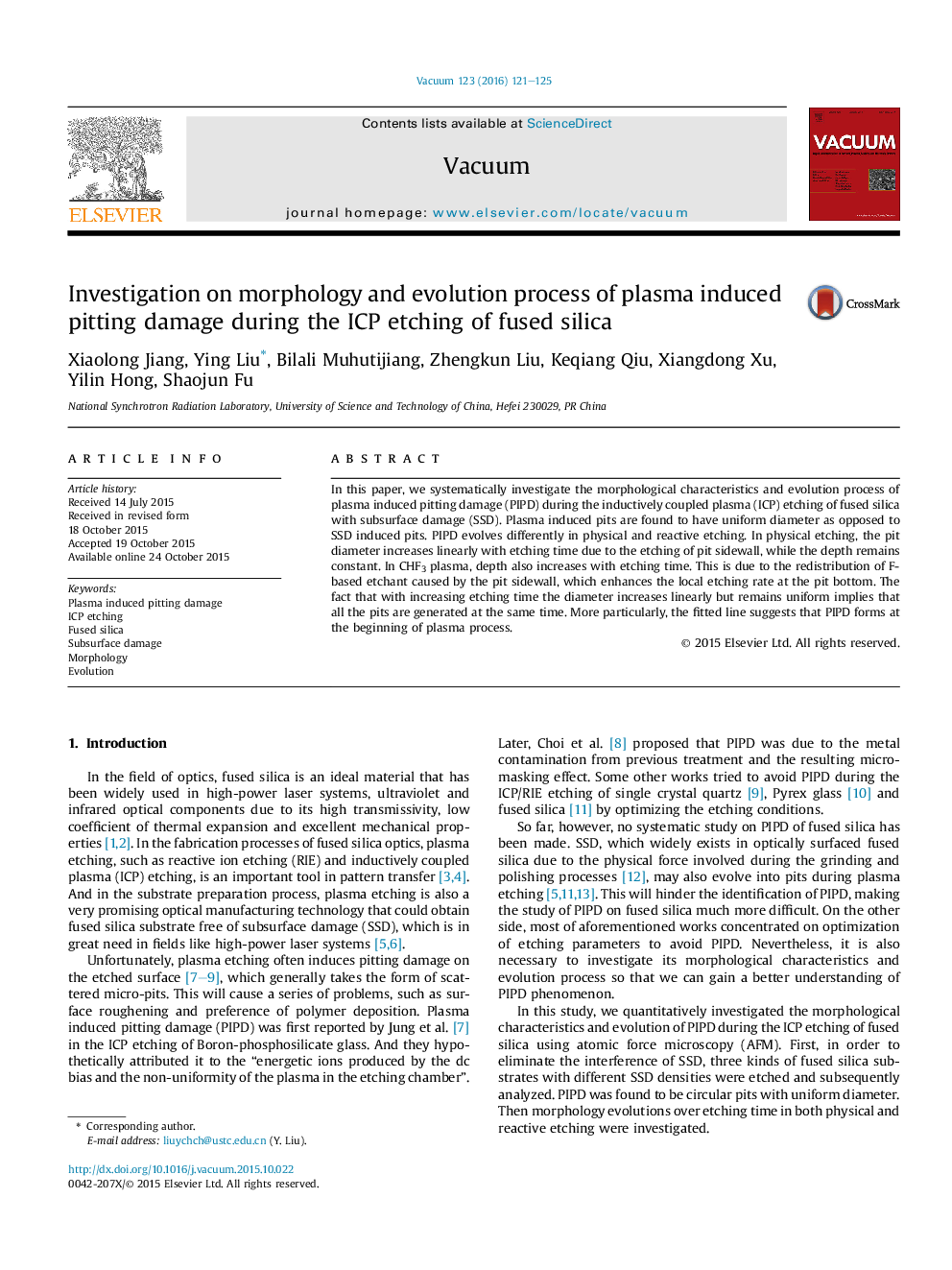| Article ID | Journal | Published Year | Pages | File Type |
|---|---|---|---|---|
| 1688237 | Vacuum | 2016 | 5 Pages |
•Plasma induced pits (PIP) are found to inherently have uniform diameter.•PIP evolution in both reactive and physical etching are studied.•An etchant redistribution theory is proposed in reactive etching.•PIP is found to form at the beginning of plasma process.
In this paper, we systematically investigate the morphological characteristics and evolution process of plasma induced pitting damage (PIPD) during the inductively coupled plasma (ICP) etching of fused silica with subsurface damage (SSD). Plasma induced pits are found to have uniform diameter as opposed to SSD induced pits. PIPD evolves differently in physical and reactive etching. In physical etching, the pit diameter increases linearly with etching time due to the etching of pit sidewall, while the depth remains constant. In CHF3 plasma, depth also increases with etching time. This is due to the redistribution of F-based etchant caused by the pit sidewall, which enhances the local etching rate at the pit bottom. The fact that with increasing etching time the diameter increases linearly but remains uniform implies that all the pits are generated at the same time. More particularly, the fitted line suggests that PIPD forms at the beginning of plasma process.
